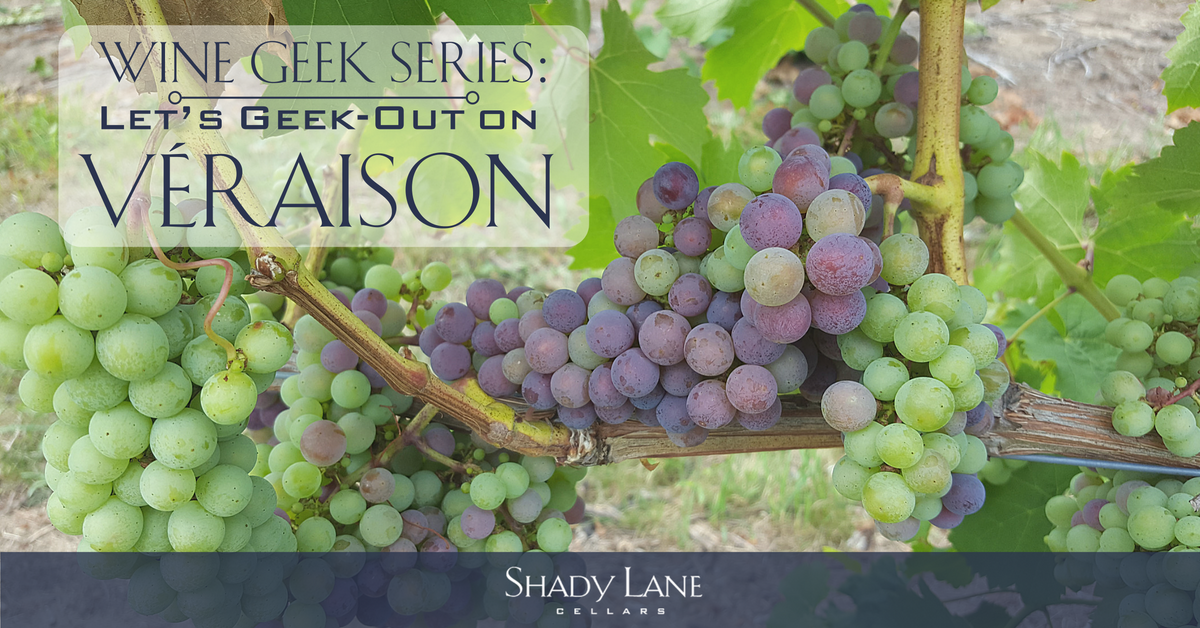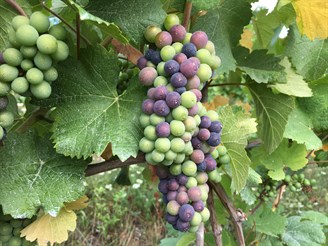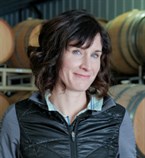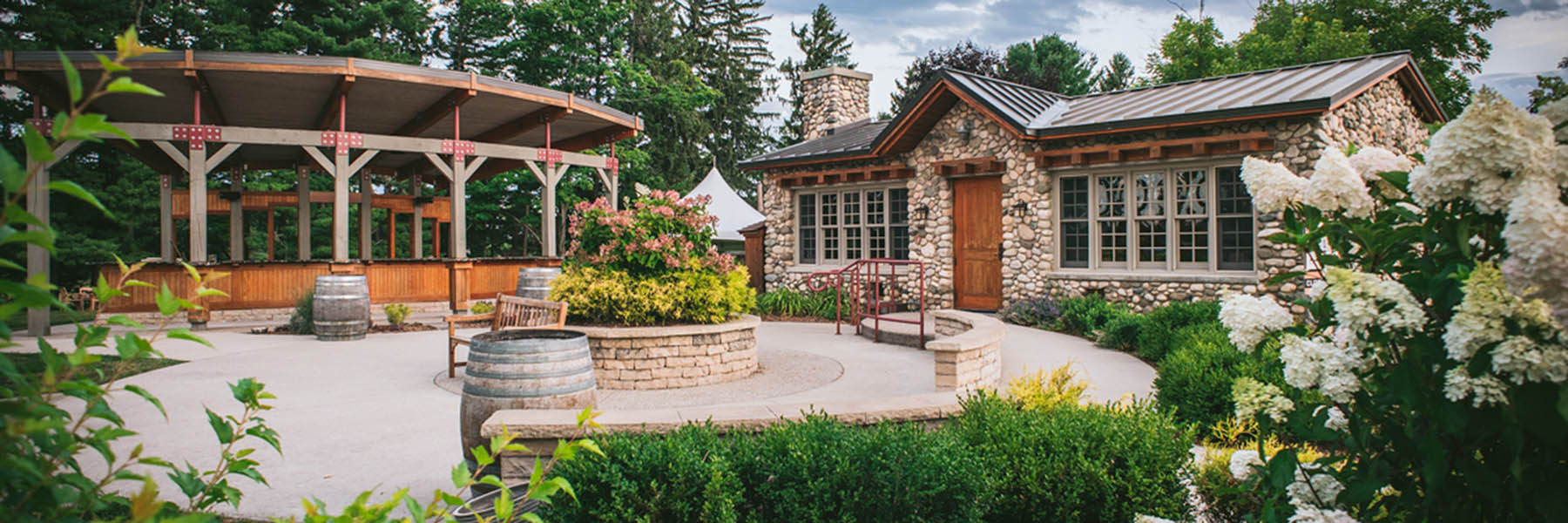Tuesday September 6, 2016

Let’s do it! Let’s get geeky and explore the science behind wine, because really that’s what’s going on in that lush glass of Pinot and that refreshing Riesling. Behind each bottle of wine is scads of plant physiology, biology, chemistry, biochemistry and maybe even a little physics. Join the wine geeks at Shady Lane for monthly installments as we dig deep into the pit of wine science and hopefully emerge with a glass in hand on the other side.
Wine Geek Series: Let’s Geek-Out on Véraison
It’s been a fantastic grape growing season; no spring frost, ideal weather during bloom, a nice fruit set to follow and lots of warm, dry weather providing perfect conditions for photosynthesis and clean, disease-free plants. It is the beginning of September, and now the vineyard is in the thick of véraison. Our excitement grows as we know harvest is approaching with great rewards from the vineyard.
Maybe you have heard the word véraison being tossed around at your favorite local winery, maybe your neighbors grow grapes, and they have spouted off the word, maybe during a late summer trip to France, you heard the word véraison. Now, again it is mentioned, and now you will understand in full what everyone is talking about when they say, “véraison has begun!”
How Does Véraison Work?
Véraison is the onset of grape ripening. It is at this time the grape berry enlarges, softens, decreases in acid and changes color. There are three stages in grape berry growth and véraison is the last.
Stage 1 consists of rapid cell division and enlargement.
Stage 2 is when growth slows and the seeds develop.
Stage 3 is where the final magic happens, and the hard bright green acidic, bitter grape is transformed into a scrumptious treat for the birds, a midnight snack for the deer and the precious raw goods for an age-old tradition of fine wine.
During véraison, the focus of the plant switches from vegetative growth of the shoots to the ripening and maturation of the grapes. Hormones within the plant prompt a redirection of the phloem sap (carbohydrates and nutrients) from the leaves and shoots to the fruit. This sap brings sucrose (sugar) and amino acids (the building blocks of proteins) to the grape berries. In the grape berry, the sucrose is hydrolyzed by a process call invertase splitting sucrose into two different sugars, glucose, and fructose. This increases the osmotic potential and causes, even more, sap to flow toward the fruit.
Tartaric and Malic acids, the primary acids in grapes, also begin to decrease during véraison. There are four different modes of acid decrease, the first being the most obvious, increased sap flow dilutes the concentration of acid. Second, carboxylic acid becomes an energy source and is broken-down in the process. Third, malic acid which is synthesized during phase 1 and 2 stops at this time. Lastly, it is hypothesized that malic acid replaces glucose as a main substrate in respiration, decreasing the concentration of malic acid even further.
Before véraison, the grape berries are hard and bright green, as sap flows into the berries  the cells increase in size as well as soften. The softening of the flesh or pulp of the grape causes the cell bonds to loosen, which allows flavors and aromas to be released. Aromatic compounds such as terpenes develop, along with hundreds of other volatile compounds found in ripe grapes. Terpenes provide important and distinguishing fragrant, floral aromas to varieties like Muscat and Riesling.
the cells increase in size as well as soften. The softening of the flesh or pulp of the grape causes the cell bonds to loosen, which allows flavors and aromas to be released. Aromatic compounds such as terpenes develop, along with hundreds of other volatile compounds found in ripe grapes. Terpenes provide important and distinguishing fragrant, floral aromas to varieties like Muscat and Riesling.
Phenolic compounds like anthocyanins and tannins begin to develop in the skins where chlorophyll had dominated with bright green pigments before. Anthocyanins provide color to red and black grape varieties while carotene and xanthophylls provide subtle yellow and orange tones to white varieties. Tannins also develop in skins and seeds providing complexity and color stability to wine. If overly extracted during the winemaking process tannins will impart bitter and astringent characteristics to the wine.
After véraison begins, we have about 6-7 weeks of fruit ripening and maturation that takes place before harvest. We take this time in the winery to bottle previous vintages, clean and organize, oil the machinery and spend some time with family and friends. It is the calm before the storm, the ease before the rush, the anticipation before the long hard hours.
Cheers!
Kasey Weirzba

Winemaker - Shady Lane Cellars


